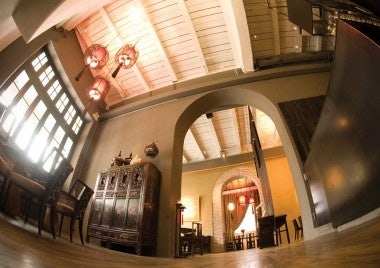Innovative Chefs Gaining Accolades From Global Food Critics#

Dim sum, the Cantonese specialty, has been available in most large cities around the world for decades. So why, suddenly, has more attention been paid to Hong Kong’s dim sum restaurants, in publications like The New York Times — which recently featured an article about the former British colony’s “haute dim sum”? I think the answer lies within the question — simply because haute dim sum, integrating top quality ingredients and an internationalized flair, is a hit with global food critics.
Lauren Shockey, writing in the Times’ “Global Table” blog, gives us non-Hong-Kongers a glimpse into the city’s seamless mixture of tradition and innovation as reflected in deceptively simple dumplings and dim sum favorites like pork buns:
Any visit to Hong Kong requires at least one dim sum feast.
While restaurants like the bustling Maxim’s Palace or the old-school favorite Luk Yu Tea House remain popular, a recent trip showed that dim sum is heading upmarket, with luxe ingredients being tucked into buns, rolls and dumplings, and nary a trolley cart of bamboo steamers in sight.
…
While [haute dim sum restaurant] Island Tang looks to the past, BO Innovation is forward-thinking. “Robuchon gave me heart; Ducasse, brains; and Ferran, courage,” explained chef-owner Alvin Leung, a k a. “Hong Kong’s Demon Chef.” Indeed, his multicourse tasting menus feature what he’s coined “X-treme Chinese,” including a dim-sum-inspired “molecular” xiao lung bao: a sphere of soup-dumpling broth that explodes in the mouth.
…
Opened by the lifestyle collective OVO group, OVOlogue markets itself as a “food-cum-gallery-restaurant,” with art and antique furniture for sale. “The food represents the best of China, but we are modernizing the heritage,” said Billy Wong, the restaurant’s executive chef. This didn’t always work: the signature shrimp and peach spring roll was overly sweet under heavy mayonnaise. But the dim sum platter on the à la carte menu included a beautifully presented dumpling molded and colored to resemble a koi, as well as a nice abalone-topped shumai.
Hong Kong chefs are clearly on the right track. With a bit more experimentation, haute dim sum might find itself ingrained in the Cantonese culinary tradition. We’ll be waiting, chopsticks in hand.